Hyundai Tucson vs Volvo XC90 – Differences & prices compared
Everyday use, family trips or long-distance drives – here’s where the differences show.
Discover whether Hyundai Tucson or Volvo XC90 fits your lifestyle better.
Costs and Efficiency:
When it comes to price and running costs, the biggest differences usually appear. This is often where you see which car fits your budget better in the long run.
Hyundai Tucson has a significantly advantage in terms of price – it starts at 30600 £, while the Volvo XC90 costs 69800 £. That’s a price difference of around 39128 £.
Fuel consumption also shows a difference: Hyundai Tucson manages with 1 L and is therefore clearly more efficient than the Volvo XC90 with 3.50 L. The difference is about 2.50 L per 100 km.
As for range, the Volvo XC90 performs slight better – achieving up to 71 km, about 1 km more than the Hyundai Tucson.
Engine and Performance:
Power, torque and acceleration say a lot about how a car feels on the road. This is where you see which model delivers more driving dynamics.
When it comes to engine power, the Volvo XC90 has a significantly edge – offering 455 HP compared to 252 HP. That’s roughly 203 HP more horsepower.
In acceleration from 0 to 100 km/h, the Volvo XC90 is clearly quicker – completing the sprint in 5.40 s, while the Hyundai Tucson takes 7.90 s. That’s about 2.50 s faster.
In terms of top speed, the Hyundai Tucson performs slight better – reaching 194 km/h, while the Volvo XC90 tops out at 180 km/h. The difference is around 14 km/h.
There’s also a difference in torque: Volvo XC90 pulls significantly stronger with 709 Nm compared to 367 Nm. That’s about 342 Nm difference.
Space and Everyday Use:
Cabin size, boot volume and payload all play a role in everyday practicality. Here, comfort and flexibility make the difference.
Seats: Volvo XC90 offers distinct more seating capacity – 7 vs 5.
In curb weight, Hyundai Tucson is evident lighter – 1520 kg compared to 2080 kg. The difference is around 560 kg.
In terms of boot space, the Hyundai Tucson offers convincingly more room – 620 L compared to 302 L. That’s a difference of about 318 L.
In maximum load capacity, the Volvo XC90 performs slight better – up to 1856 L, which is about 57 L more than the Hyundai Tucson.
When it comes to payload, Volvo XC90 clearly perceptible takes the win – 710 kg compared to 545 kg. That’s a difference of about 165 kg.
Who wins the race?
The Hyundai Tucson proves to be outperforms in nearly all aspects and therefore becomes our DriveDuel Champion!
Hyundai Tucson is the better all-rounder in this comparison.
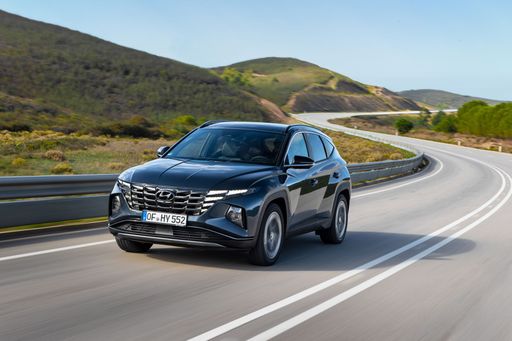
Hyundai Tucson
Hyundai Tucson
The Hyundai Tucson is a standout choice in the compact SUV segment, offering a perfect blend of style, comfort, and practicality. Its modern design is complemented by a spacious interior that provides ample room for passengers and luggage alike. With advanced technology and safety features, the Tucson ensures a smooth and enjoyable driving experience.
details @ hyundai.news
@ hyundai.news
 @ hyundai.news
@ hyundai.news
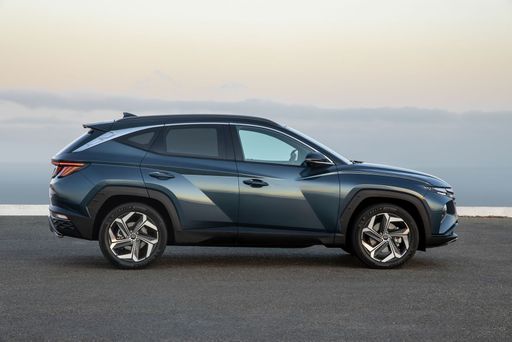 @ hyundai.news
@ hyundai.news
 @ hyundai.news
@ hyundai.news
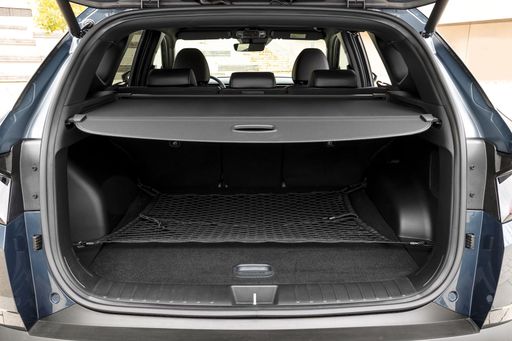 @ hyundai.news
@ hyundai.news
Volvo XC90
The Volvo XC90 stands out with its elegant Scandinavian design, seamlessly blending luxury with versatility. Inside, it offers a spacious and meticulously crafted interior, showcasing high-quality materials and advanced technology. The vehicle provides a comfortable and smooth driving experience, making it a popular choice for families and long journeys.
details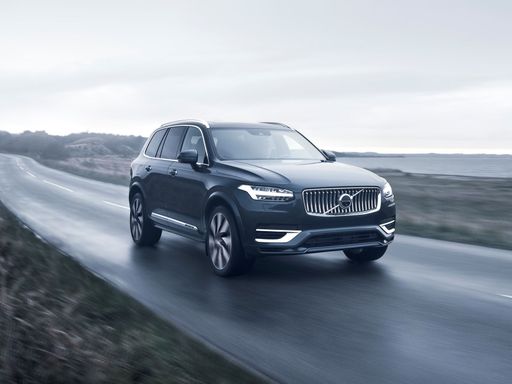 @ media.volvocars.com
@ media.volvocars.com
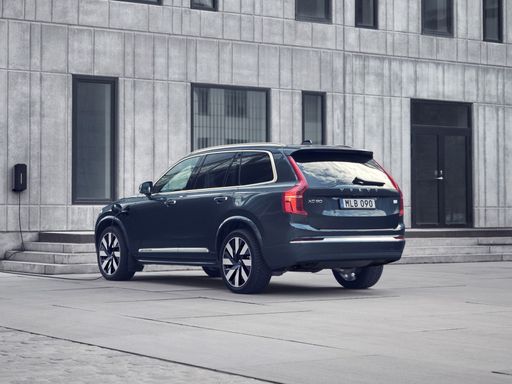 @ media.volvocars.com
@ media.volvocars.com
 @ media.volvocars.com
@ media.volvocars.com
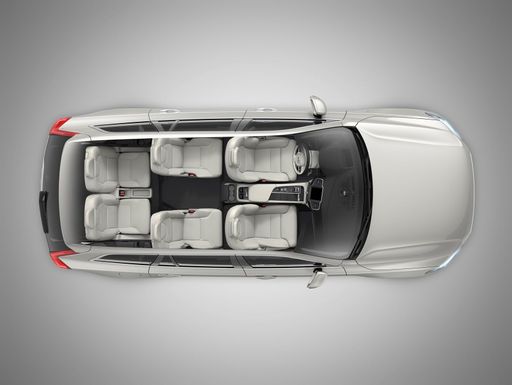 @ media.volvocars.com
@ media.volvocars.com
 @ media.volvocars.com
@ media.volvocars.com

|

|
|
|
|
Costs and Consumption |
|
|---|---|
|
Price
30600 - 46300 £
|
Price
69800 - 84600 £
|
|
Consumption L/100km
1 - 6.9 L
|
Consumption L/100km
3.5 - 8.5 L
|
|
Consumption kWh/100km
-
|
Consumption kWh/100km
-
|
|
Electric Range
64 - 70 km
|
Electric Range
71 km
|
|
Battery Capacity
-
|
Battery Capacity
14.70 kWh
|
|
co2
22 - 156 g/km
|
co2
79 - 191 g/km
|
|
Fuel tank capacity
42 - 54 L
|
Fuel tank capacity
71 L
|
Dimensions and Body |
|
|---|---|
|
Body Type
SUV
|
Body Type
SUV
|
|
Seats
5
|
Seats
7
|
|
Doors
5
|
Doors
5
|
|
Curb weight
1520 - 1889 kg
|
Curb weight
2080 - 2297 kg
|
|
Trunk capacity
546 - 620 L
|
Trunk capacity
262 - 302 L
|
|
Length
4510 - 4520 mm
|
Length
4953 mm
|
|
Width
1865 mm
|
Width
1923 mm
|
|
Height
1650 mm
|
Height
1771 mm
|
|
Max trunk capacity
1721 - 1799 L
|
Max trunk capacity
1816 - 1856 L
|
|
Payload
525 - 545 kg
|
Payload
653 - 710 kg
|
Engine and Performance |
|
|---|---|
|
Engine Type
Diesel MHEV, Petrol MHEV, Petrol, Full Hybrid, Plugin Hybrid
|
Engine Type
Petrol MHEV, Plugin Hybrid
|
|
Transmission
Automatic, Manuel
|
Transmission
Automatic
|
|
Transmission Detail
Dual-Clutch Automatic, Manual Gearbox, Automatic Gearbox
|
Transmission Detail
Automatic Gearbox
|
|
Drive Type
Front-Wheel Drive, All-Wheel Drive
|
Drive Type
All-Wheel Drive
|
|
Power HP
136 - 252 HP
|
Power HP
250 - 455 HP
|
|
Acceleration 0-100km/h
7.9 - 11.6 s
|
Acceleration 0-100km/h
5.4 - 7.7 s
|
|
Max Speed
180 - 194 km/h
|
Max Speed
180 km/h
|
|
Torque
265 - 367 Nm
|
Torque
360 - 709 Nm
|
|
Number of Cylinders
4
|
Number of Cylinders
4
|
|
Power kW
100 - 185 kW
|
Power kW
184 - 335 kW
|
|
Engine capacity
1598 cm3
|
Engine capacity
1969 cm3
|
General |
|
|---|---|
|
Model Year
2024
|
Model Year
2024 - 2025
|
|
CO2 Efficiency Class
E, F, D, B
|
CO2 Efficiency Class
G, B
|
|
Brand
Hyundai
|
Brand
Volvo
|
What drive types are available for the Hyundai Tucson?
Available configurations include Front-Wheel Drive or All-Wheel Drive.
The prices and data displayed are estimates based on German list prices and may vary by country. This information is not legally binding.
